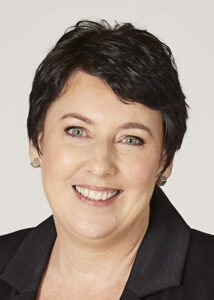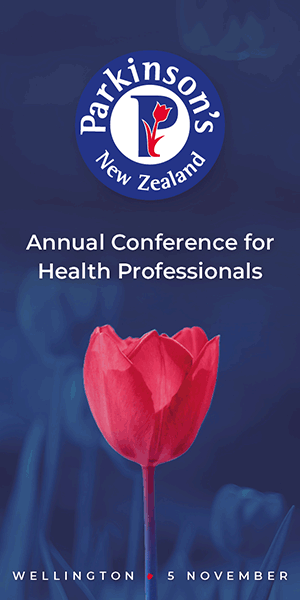The practice types studied were defined as follows:
- Corporate practice: A group of practices owned and run as a business entity, including practices that deliver high volumes of care, with low costs for patients and often without the need for an appointment. Corporate practices have a relatively high degree of standardisation in business and clinical processes across different sites. Most corporate practices had been traditional practices before being bought by a corporate entity.
- Health Care Home (HCH): As defined by the HCH Collaborative, HCHs emphasised ready access to urgent and unplanned care; proactive care for those with more complex need; better routine and preventative care; and improved business efficiency and sustainability. Most had been traditional practices prior to embarking on the HCH programme.
- Traditional general practice: Such practices typically centred on the general practitioner, with nursing support. They could span the range from very small to very large organisations, and could serve high-need or low-need populations. Traditional general practice was not typically part of a formally standardised approach to organising care, with the individual practice having a high degree
of autonomy over service delivery. - Māori practices: Practices owned and governed by Māori entities. They were identified through lists from the Ministry of Health and the (former) district health boards together with web searches, direct contact with practices and advice from our Māori investigators.
- Pacific practices: Practices owned and governed by Pacific entities. They were identified through lists from the Ministry of Health and DHBs together with web searches, direct contact with practices and advice from our Pacific investigators.
For our research on general practice models, our team studied 924 general practices in Aotearoa New Zealand at September 2018. We noted different levels of enrolment across practice models for Māori, Pacific and people living in quintile 5 (highest-deprivation) areas.
We found that practice models with more patients with high needs provided more nurse, nurse practitioner and general practitioner (GP) time.
This increase in clinical input was insufficient to meet the level of need and may not be the only resource required to achieve equitable patient health outcomes.
Practice differences
Most of the practices in our study – 695, or 75 per cent – were traditional practices.
The other practice models were corporate (103 practices), Health Care Homes (127), and those owned by a primary health organisation (PHO) or former district health board (27), a trust or non-governmental organisation (NGO) (99), Māori practices (65) and Pacific practices (15).
Some practices fitted more than one model, for example, 59 of 65 Māori practices were owned by a trust/NGO. (For definitions of the different practice models, see panel at right.)
Half the practices in Aotearoa New Zealand had fewer than 3622 enrolled patients. The smallest practices (by median number of enrolled patients) were Pacific (2356) and Māori (2954). The largest were corporate practices (5527) and Health Care Homes (5750).
Practice size was not associated with either better or worse patient outcomes.
Twice as many Māori practices (34 per cent) were rural compared with the overall percentage (17 per cent).
Traditional practices were the most widely spread geographically but only 14 per cent were rural, slightly higher than corporate practices (11 per cent). All Pacific practices were urban.
Of the newest model, Health Care Homes, 21 per cent were rural, with some Health Care Homes also being trust/NGO practices.
The vast majority of Māori and Pacific practices held very low cost access (VLCA) contracts and so had low patient co-payments – 94 per cent and 87 per cent respectively. By contrast, 21 per cent of traditional practices, 23 per cent of Health Care Homes and 35 per cent of corporate practices were on VLCA contracts.
Overall, VLCA contracts were held by 30 per cent of practices.
Traditional practice patients
The average traditional practice comprised 12 per cent Māori patients. Because of the large number of traditional practices, they enrolled 59 per cent (390,895) of all Māori patients, and 73 per cent of the total population.
The average Māori practice enrolled 52 per cent Māori patients but collectively the 65 Māori practices enrolled 124,854 (19 per cent) of all Māori patients, and 5 per cent of the total population.
Similarly, traditional practices enrolled 56 per cent of all patients living in quintile 5 areas, but in the average traditional practice and Health Care Home, 11 per cent of their patients lived in quintile 5 deprivation areas. The average for corporate practices was 17 per cent, for Pacific practices was 46 per cent and for Māori practices was 58 per cent.
Left out of the system were about 360,000 people who were not enrolled in a practice and paid higher fees than enrolled patients when they attended any practice.
Averages can hide huge variability. For example, 47 traditional practices had an average of more than 30 per cent Māori patients and 120 practices had an average of more than 30 per cent patients who lived in quintile 5 deprivation areas.
Left out of the system were about 360,000 people who were not enrolled in a practice and paid higher fees than enrolled patients when they attended any practice.
Providing preventive care

Preventive care varied across the practice models. Huge variation was seen between the proportion of practices providing cervical screening (93 per cent) and those providing cardiovascular risk assessment (46 per cent).
Traditional practices had the highest rate for HbA1c testing (for type 2 diabetes).
Corporate practices had the highest rate for cervical screening but were near the low end for cardiovascular risk assessment. Pacific practices had the highest rate for cardiovascular risk assessment and were near the high end of HbA1c testing.
Māori practices were intermediate for cervical screening, and cardiovascular risk assessment but lowest for HbA1c testing.
Health Care Home practices had the lowest rates of cervical screening and cardiovascular risk assessment.
Best patient outcomes

Most variation in patient health outcomes was explained by differences between patients, and not by practice model.
Outcomes associated with practice models of care, after adjusting for patient factors, included the following:
- Health Care Home practices had child immunisation rates, at age six months, 4 per cent higher and emergency department (ED) attendances 11 per cent lower than other practices.
- Pacific practices had lower immunisation rates (by 12 per cent) and lower ED attendances (by 15 per cent) than other practices.
- Māori practices had lower child immunisation rates (18 per cent) but were not different from other practices with respect to child and adult ambulatory sensitive (ie avoidable) hospitalisations and ED attendances.
- Corporate practices had a higher ambulatory sensitive hospitalisation rate than traditional.
- Hospital use was higher for trust/ NGO practices than for traditional practices: child and adult ambulatory sensitive admissions were 38 per cent and 31 per cent higher, respectively, and ED attendances 15 per cent higher.
Continuity of practice

Patients who were enrolled for more than a year in the same practice, across all models, had fewer child and adult ambulatory sensitive hospitalisations, and fewer ED attendances (24 per cent, 19 per cent and 20 per cent, respectively).
We conclude that patients changing practice may have more health need.
Patient continuity with a specific GP within a practice was associated with fewer child ambulatory sensitive hospitalisations, but not with other patient health outcomes.
Nicolette Sheridan, project lead, is professor and head of the School of Nursing at Massey University
Tim Kenealy, project co-lead and specialist GP, has an honorary appointment in the Department of General Practice and Primary Health Care, at the University of Auckland.
Tom Love, project co-lead, is a director of Sapere Research Group, an international research organisation.
For the first article in this series, see Patient need the crucial factor. Nurse work will be the subject of the next article. This article has been reproduced with permission from New Zealand Doctor Rata Aotearoa.
Interested in free primary care data? Explore the EPiC dashboard.




